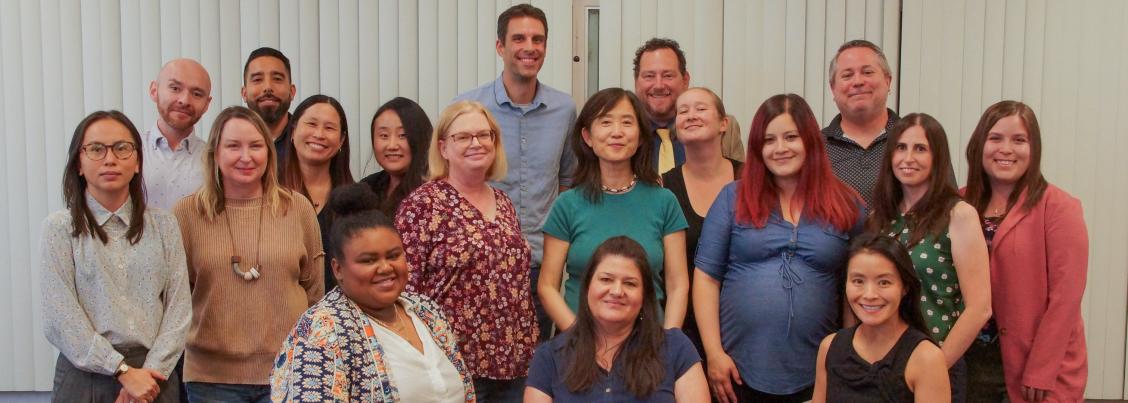
Biography
Maura Mitrushina
Education
- Ph.D. 1985, State University of New York
- M.S. 1977, Leningrad University
- M.S. 1973, Leningrad Conservatory
Specialty Areas: Clinical, Physiological and Neuropsychology.
Courses Taught
- Psy 310 - Abnormal Psychology
- Psy 473/L - Advanced Inquiry in Behavioral Neuroscience
**Not currently accepting research assistants.
Selected Publications and Presentations
Publications:
Over 50 articles and book chapters on the topics of cognitive changes in normal aging and dementias of different etiologies, cognitive screening of psychiatric patients, and psychometric properties of neuropsychological tests.
Mitrushina, M. (2009). Cognitive screening methods. In I. Grant & M. Adams (Eds.) Neuropsychological Assessment of Neuropsychiatric and Neuromedical Disorders, 3rd edition. New York: Oxford University Press.
The chapter is dedicated to the description and comparative analysis of screening instruments for cognitive impairment in patients with psychiatric and neurological conditions.
Mitrushina, M., Boone, K.B., Razani, J., & D’Elia, L.F., (2005). Handbook of Normative Data for Neuropsychological Assessment., 2nd edition. NY: Oxford University Press.
(From the jacket): When Handbook of Normative Data for Neuropsychological Assessment was published in 1999, it was the first book to provide neuropsychologists with summaries and critiques of normative data for neuropsychological tests. The Second Edition, which has been revised and updated throughout, presents data for 26 commonly used neuropsychological tests, including: Trailmaking, Color Trails, Stroop Color Word Interference, Auditory Consonant Trigrams, Paced Auditory Serial Addition, Ruff 2 and 7, Digital Vigilance, Boston Naming, Verbal Fluence, Rey-Osterrieth Complex Figure, Hooper Visual Fluency, Design Fluency, Tactual Performance, Wechsler Memory Scale-Revised, Rey Auditory-Verbal learning, Hopkins Verbal learning, WHO/UCLA Auditory Verbal Learning, Benton Visual Retention, Finger Tapping, Grip Strength (Dynamometer), Grooved Pegboard, Category, and Wisconsin Card Sorting tests. In addition, California Verbal learning (CVLT and CVLT-II, CERAD ListLearning and selective Reminding Tests, as well as the newest version of the Wechsler Memory Scale (WMS-III and WMS-IIIA), are reviewed. Locator tables throughout the book guide the reader to the sets of normative data that are best suited to each individual case, depending on the demographic characteristics of the patient, and highlight the advantages associated with using data for comparative purposes. Those using the book have the option of reading the author’s critical review of the normative data for a particular test, or simply turning to the appropriate data locator table for a quick reference to the relevant data tables in the Appendices. The Second Edition includes reviews of 15 new tests. The way the data are presented has been changed to make the book easier to use. Meta-analytic tables of predicted values for different ages (and education, where relevant) are included for nine tests that have a sufficient number of homogeneous datasets. No other reference offers such an effective framework for the critical evaluation of normative data for neuropsychological tests. Like the first edition, the new edition will be welcomed by practitioners, researchers, teachers, and graduate students as a unique and valuable contribution to the practice of neuropsychology.
Presentations:
Over 40 presentations at national and international meetings on the topics of cognitive changes in normal and abnormal aging, cognitive screening of psychiatric patients, and functional outcomes of long-term disability in patients with brain injuries.
Research Interests
We are conducting a clinically-oriented project directed at assessment and case-management of patients with brain dysfunction who are receiving services at the Independent Living Center (ILC) in Van Nuys. This is a community service project which is also aimed at training students in providing clinical services. In addition, it offers a research opportunity to investigate functional status of long-term head-injury survivors. Students are trained in establishing clinical rapport with patients and in administration of a comprehensive battery of tests and questionnaires assessing cognitive status and functional capacities of patients. At the present time, we are working on data integration, analysis, and interpretation, and are not collecting data at ILC. However, we are planning to start a new phase of the project in the near future.
Research Interests
We are conducting a clinically-oriented project directed at assessment and case-management of patients with brain dysfunction who are receiving services at the Independent Living Center (ILC) in Van Nuys. This is a community service project which is also aimed at training students in providing clinical services. In addition, it offers a research opportunity to investigate functional status of long-term head-injury survivors. Students are trained in establishing clinical rapport with patients and in administration of a comprehensive battery of tests and questionnaires assessing cognitive status and functional capacities of patients. At the present time, we are working on data integration, analysis, and interpretation, and are not collecting data at ILC. However, we are planning to start a new phase of the project in the near future.




